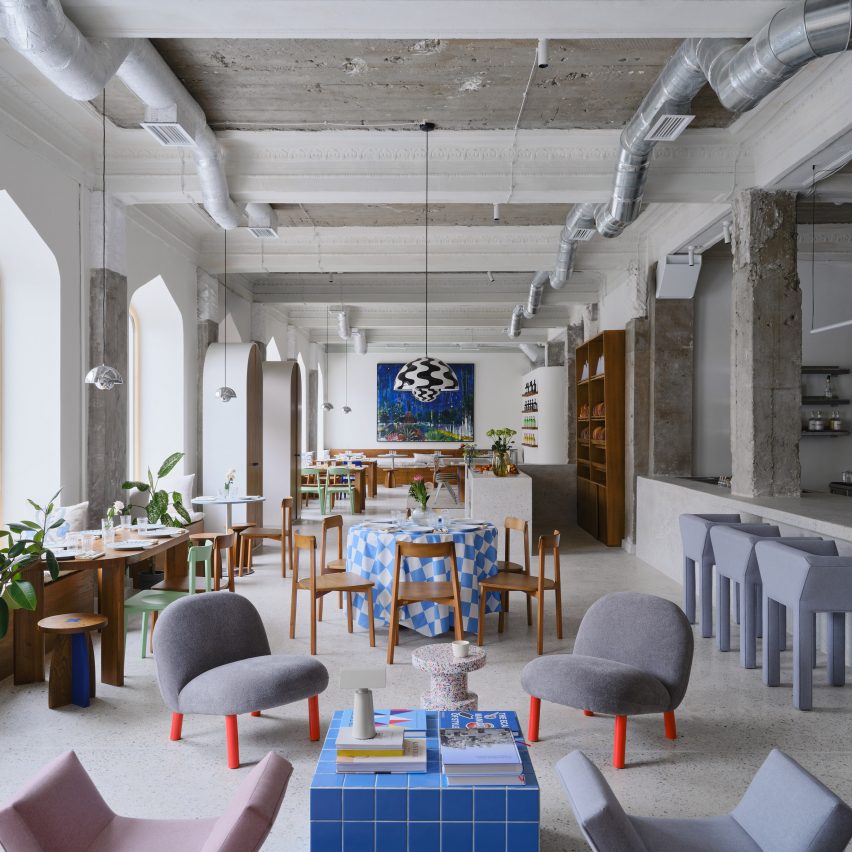
Local practice NAAW Studio has converted a former Soviet railway workers’ housing block into the Fika restaurant in Almaty, Kazakhstan, retaining original features of 1950s building.
According to NAAW Studio, the restaurant re-examines the TurkSib Workers’ House’s social context by contrasting the original ornamentation with playful, contemporary details informed by Almaty’s surroundings.
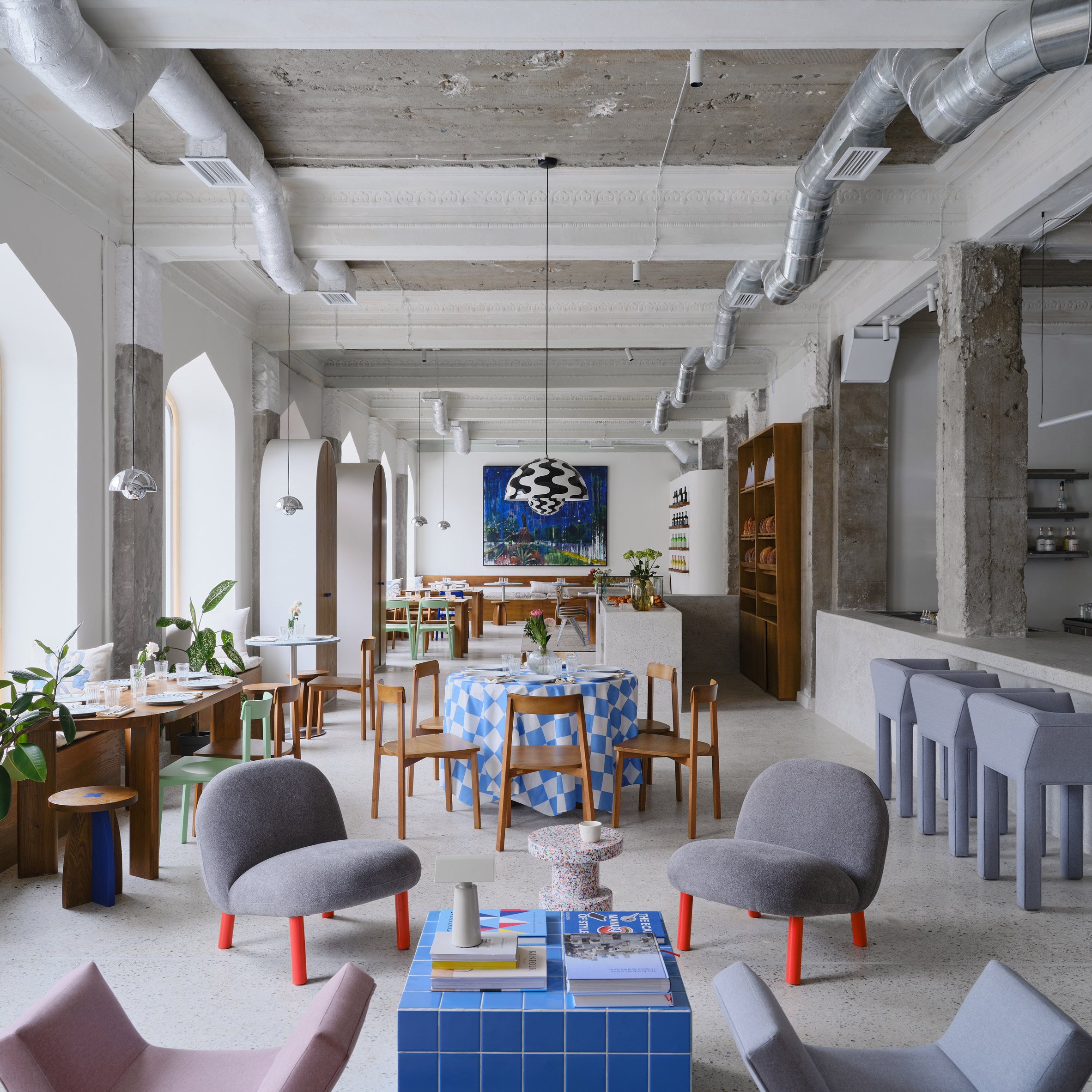
“We wanted to ensure that the interior did not romanticise the legacy of the colonial era, but at the same time did not deny it,” NAAW co-founder Elvira Bakubayeva told Dezeen.
“When we found the original ceiling mouldings and capitals in a dilapidated state underneath the suspended ceiling panels from the past owners, we made the decision to preserve and give them visibility without a thorough restoration.”
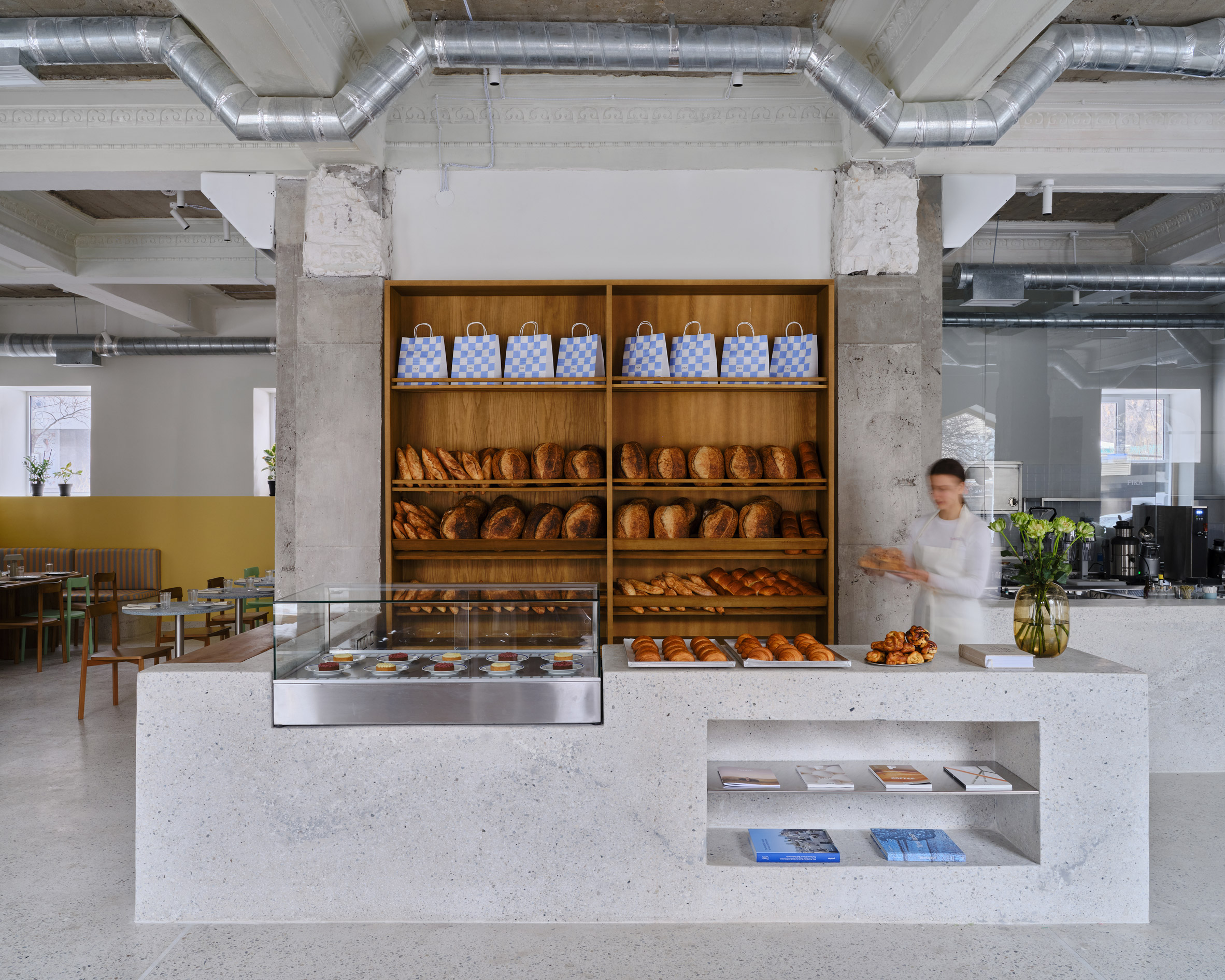
Following the client’s brief for a cafe that also acts as an urban space, the studio opened up the interior to reduce friction with the streetscape.
“The key feature of the place is its openness,” Bakubayeva explained. “We wanted to make it an extension of the city through a lack of unnecessary walls, an open bakery, spacious seating and large windows.”
“To support this, the floor material enters from the outside, from the porch, and passes through all the rooms and flows seamlessly into the bar.”
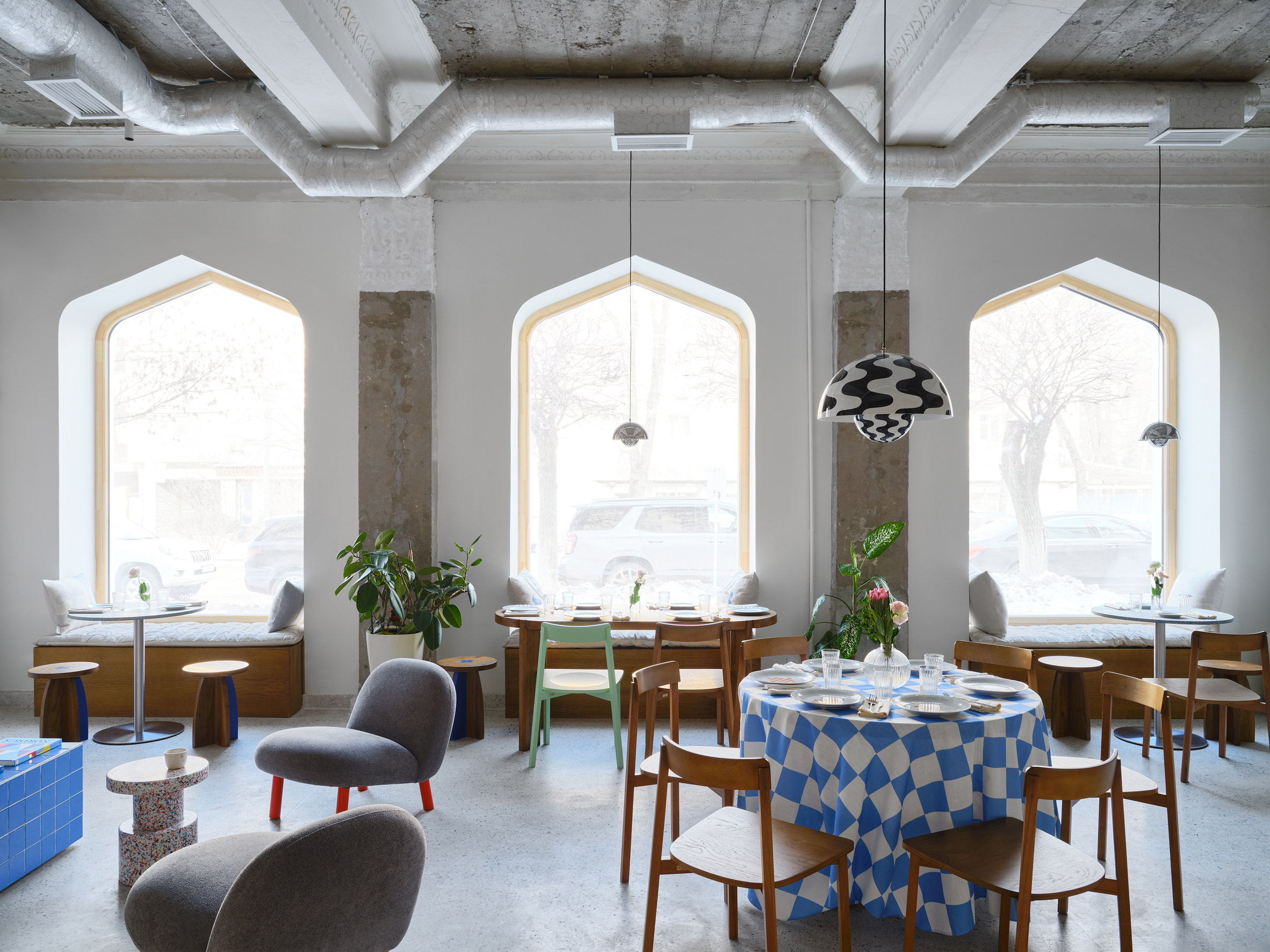
Finishes consist primarily of light grey terrazzo, white walls and bare structural concrete against accents of cedar wood and pops of colour.
Following the geometry of the original openings, angular windows with nook seating run the length of the restaurant and were fitted with undivided panes of glass to further dissolve the interior-exterior boundary.
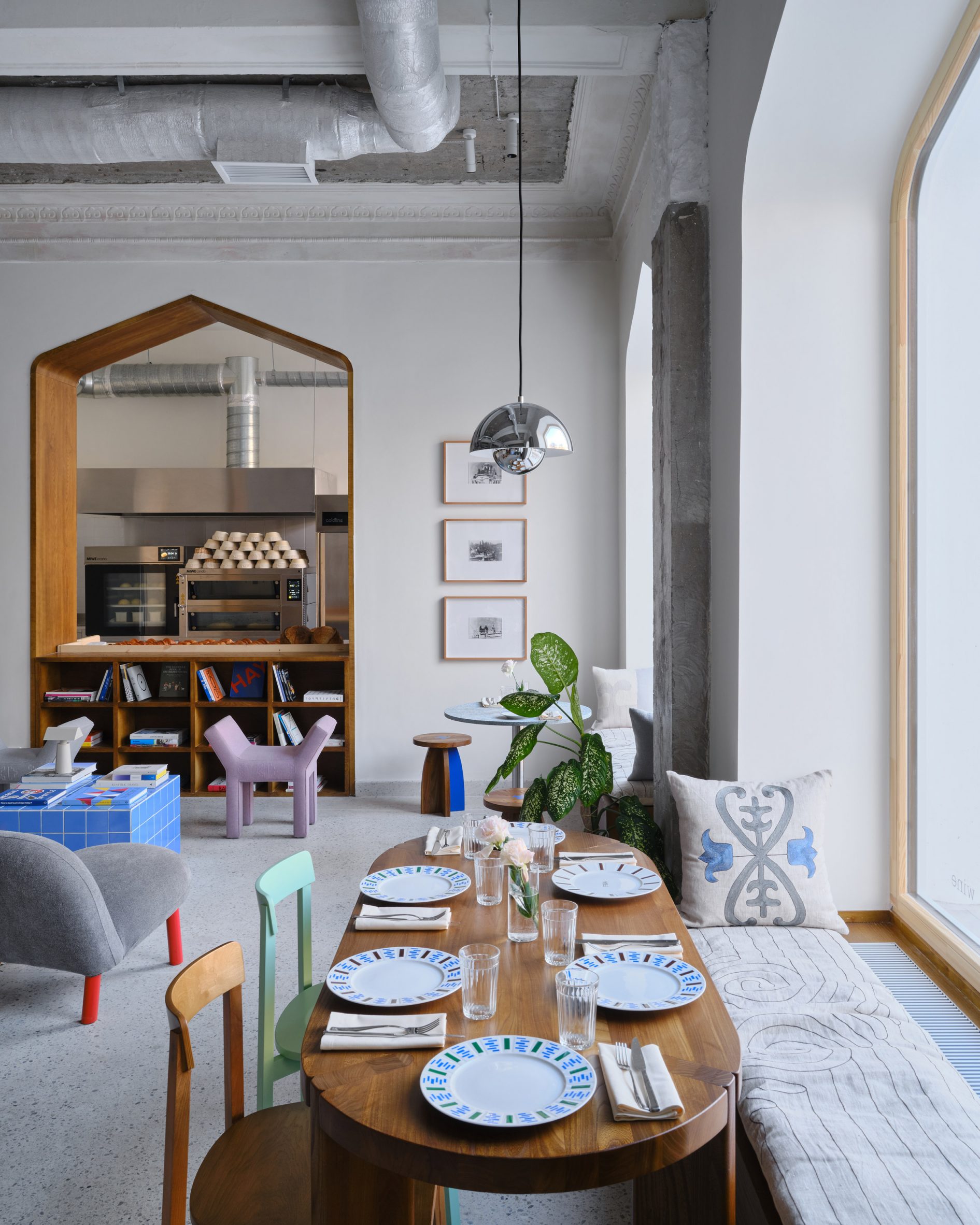
The studio placed a monolithic counter and timber display shelves in front the cafe entrance between the open bakery and primary dining space.
Tables, stools and cabinets were produced by local craftsman using regionally-sourced karagach wood, while upholstered chairs informed by Kazakh yurts and imported fixtures from &Tradition and Hay complete the “spatial tapestry”.
Towards the back of the restaurant, a secondary seating zone was defined by a bold, yellow-painted dado wall.
“Half-painting the walls is a technique that was used in all entrances and municipal establishments during the Soviet era,” Bakubayeva said.
“This was used consciously; we wanted to reinterpret this ascetic technique and give it a cosy touch by adding elements such as striped textiles, artistic lamps and tables made of recycled plastic with ‘confetti’ patterns.”
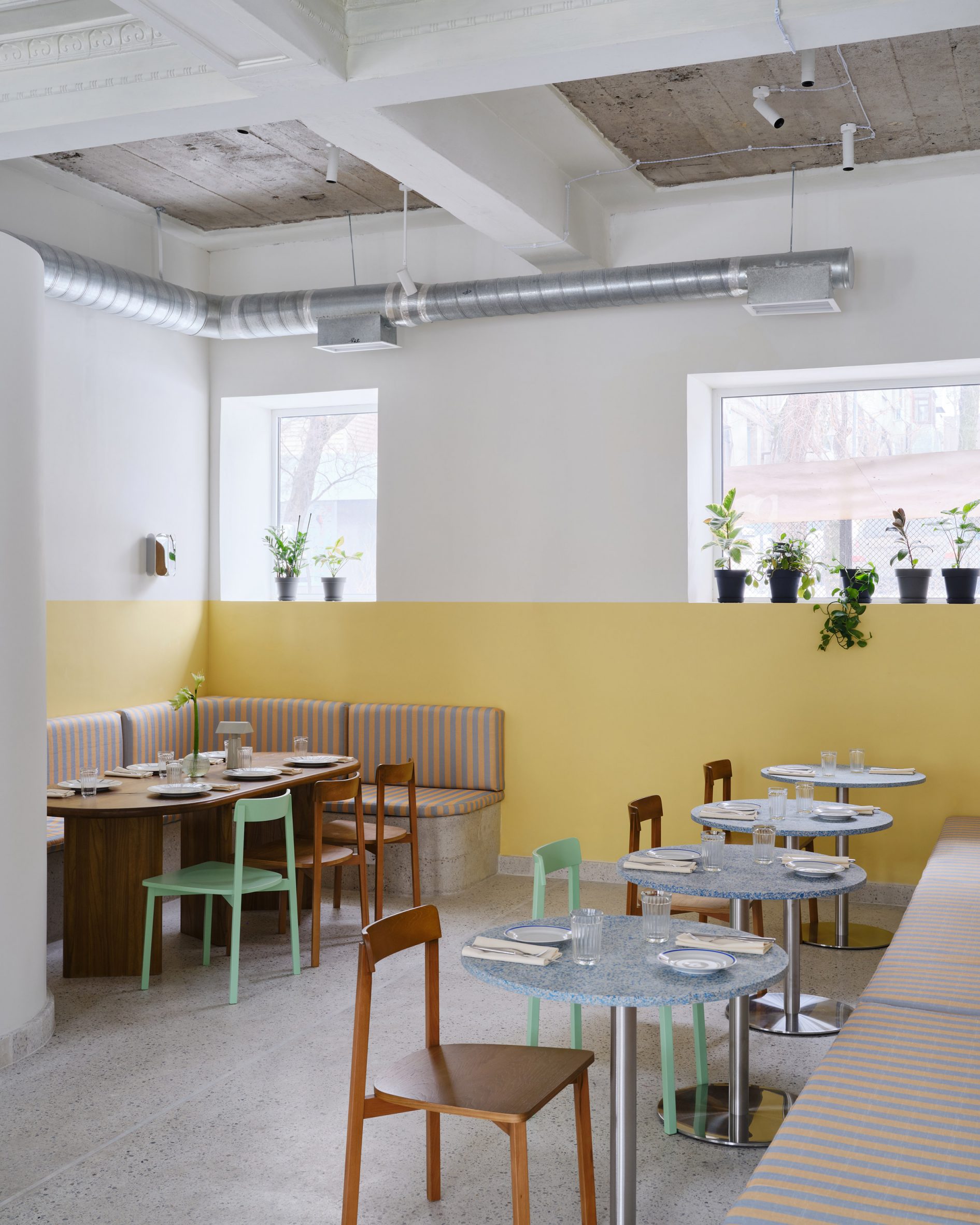
The bathroom corridor was lined with bright chequerboard tiles as a vibrant counterpoint to the rest of the restaurant.
“The chequerboard pattern on the floor, walls and ceiling of the bathroom was originally invented as a visual effect to dissolve the planes of a disproportionately narrow and tall space,” Bakubayeva said.
“The corridor to the toilets wanted to be like a brightly coloured ‘jacket lining’: not immediately visible, but pleasing to the eye of the user who went deep into the space.”
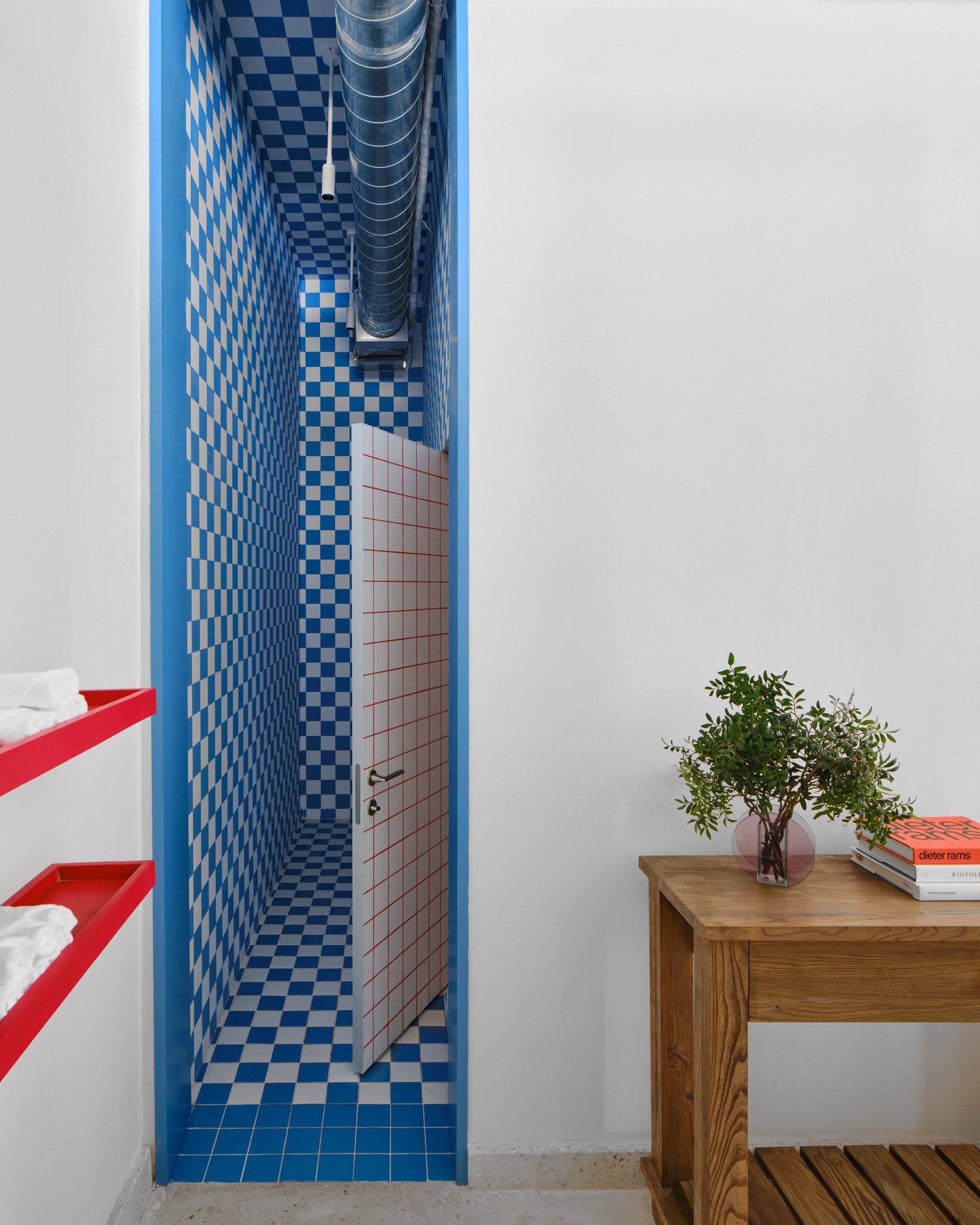
Two key art pieces were selected for the project, the first being a painted depiction of Almaty city by Nurbol Nurahmet and the second an abstract work by Assel Nussipkozhanova reinterpreting Kazakh patterns.
“We wanted the art to reflect the idea of urban public space and tell the story of the building,” Bakubayeva explained.
“The walls also feature photographs from the building’s construction and a recreated drawing of the original facade, which pay tribute to the building itself as an architectural object, a physical witness to history.”
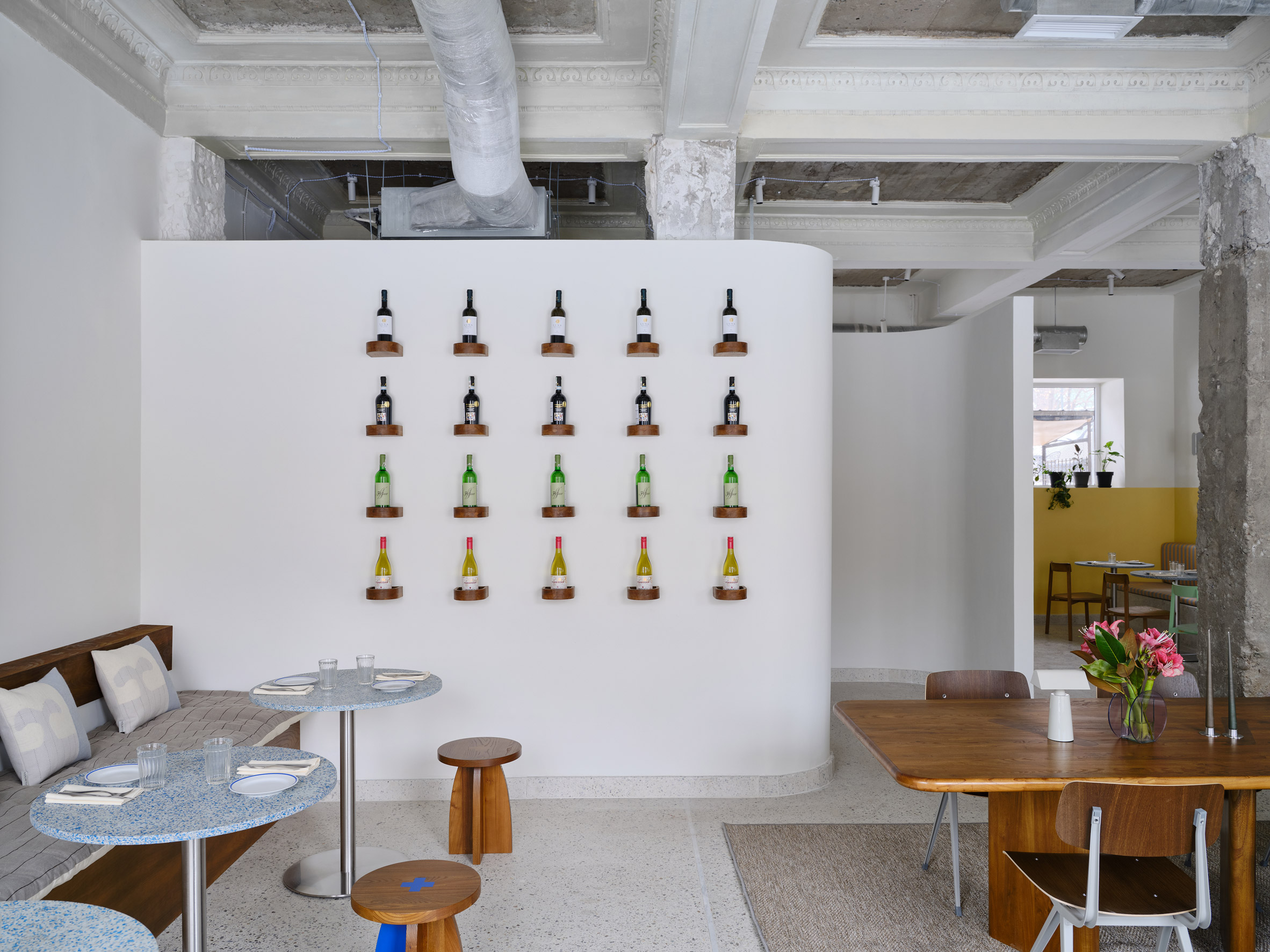
NAAW Studio is a female-led Kazakhastani architectural practice based in Almaty, founded in 2019 by Elvira Bakubayeva and Aisulu Uali.
Other restaurant interiors recently featured on Dezeen include a restaurant in Portugal with a bench made from ancient rock salt by Studio Gameiro and a collection of hospitality venues within a 1920s Detroit skyscraper by Method Co.
The photography is by Damir Otegen
The post Studio NAAW uncovers soviet-era details in Almaty restaurant interior appeared first on Dezeen.
www.dezeen.com










